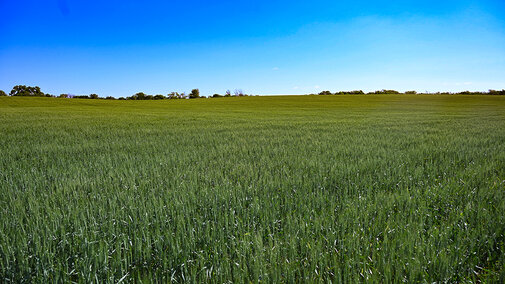Wheat disease surveys were conducted in Saline and Jefferson Counties in southeastern Nebraska on May 22. Growth stage ranged from flowering to soft dough. All fields visited looked healthy with a luxuriant green canopy (Figure 1), but they had trace to low levels of disease. The most commonly observed disease was the wheat streak mosaic virus (WSMV) disease complex (Figure 2). Other diseases observed were Fusarium head blight (FHB, Figure 3), Septoria tritici blotch (Figure 4) and stripe rust (Figure 5).
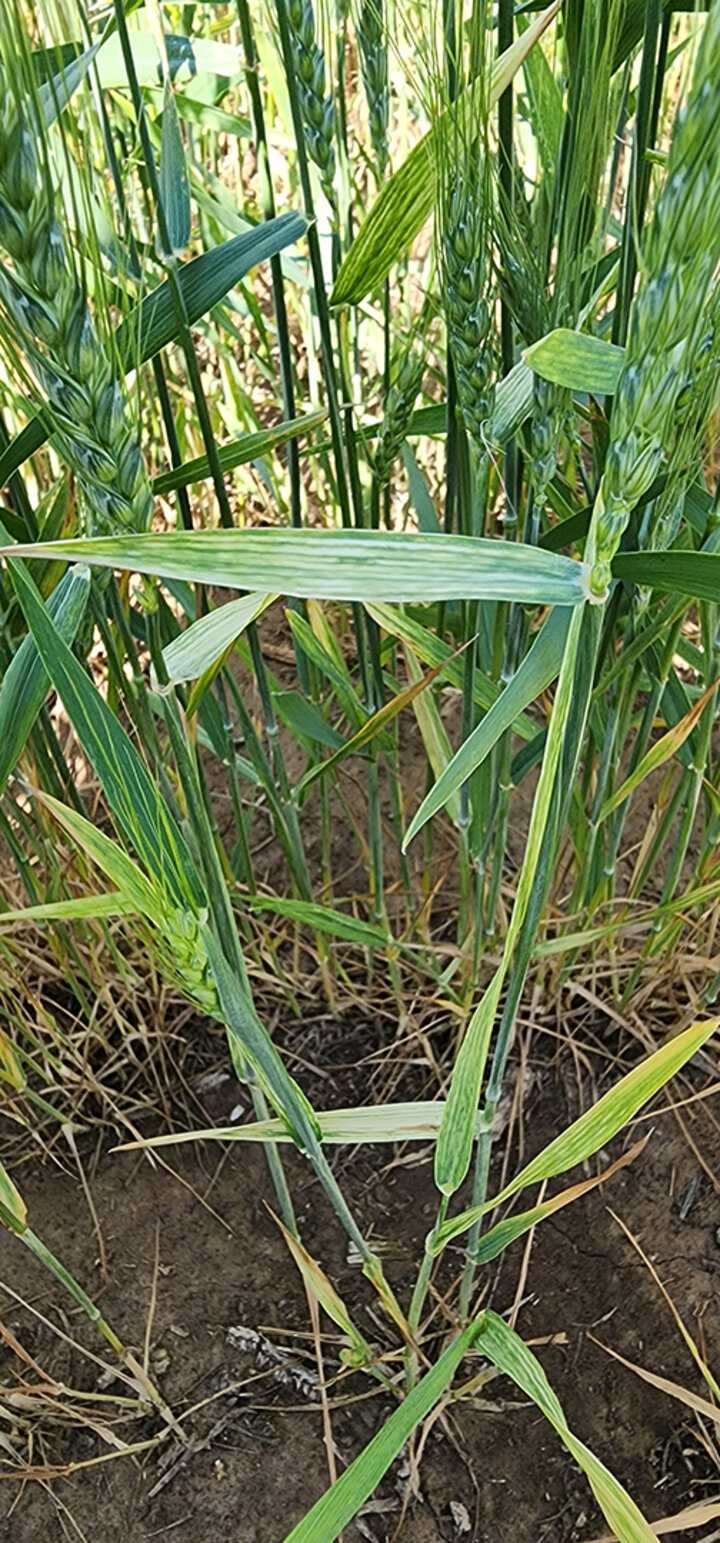
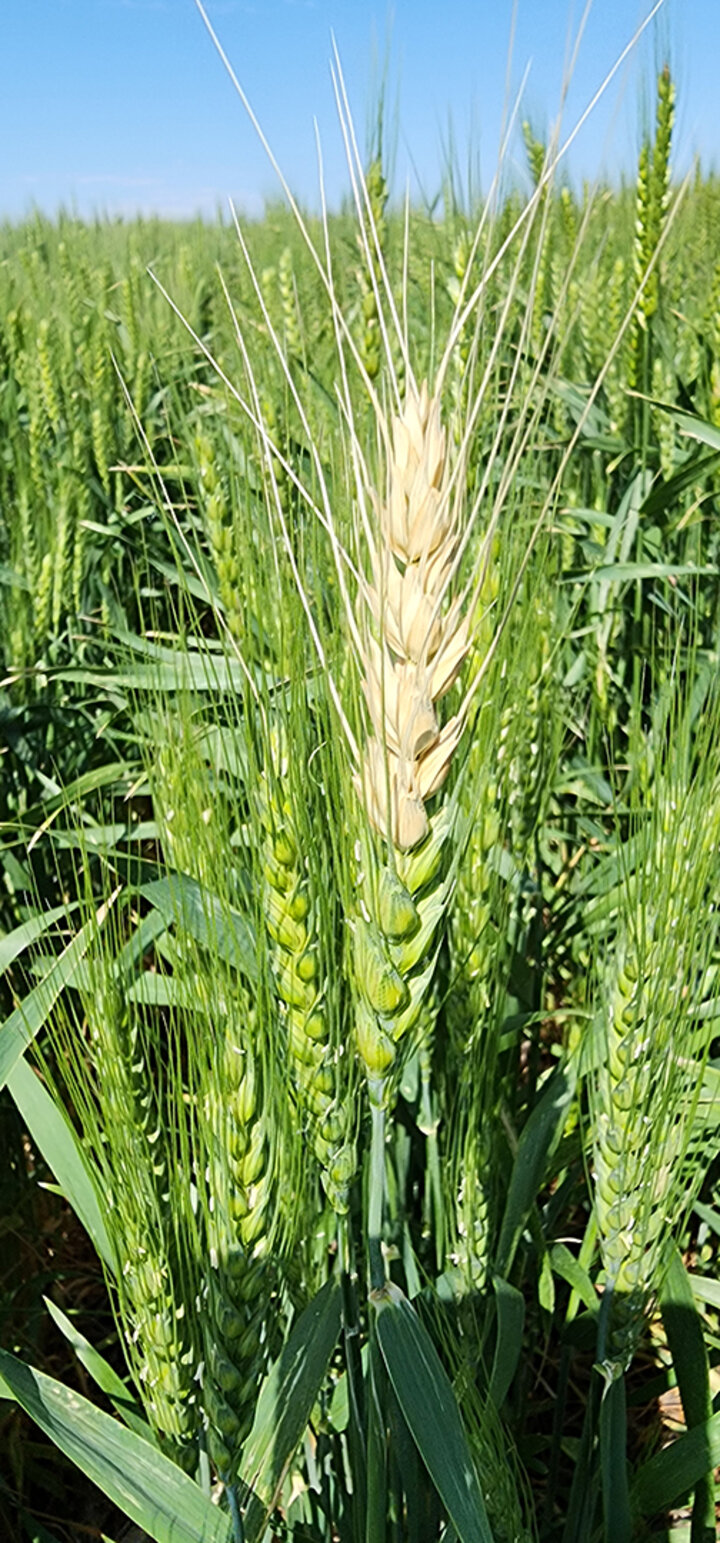
Management
Once symptoms of the WSMV complex appear, it is too late to control it. For next year’s wheat crop, the most effective management strategy is to control volunteer wheat, especially volunteer that emerges in wheat fields following pre-harvest hailstorms.
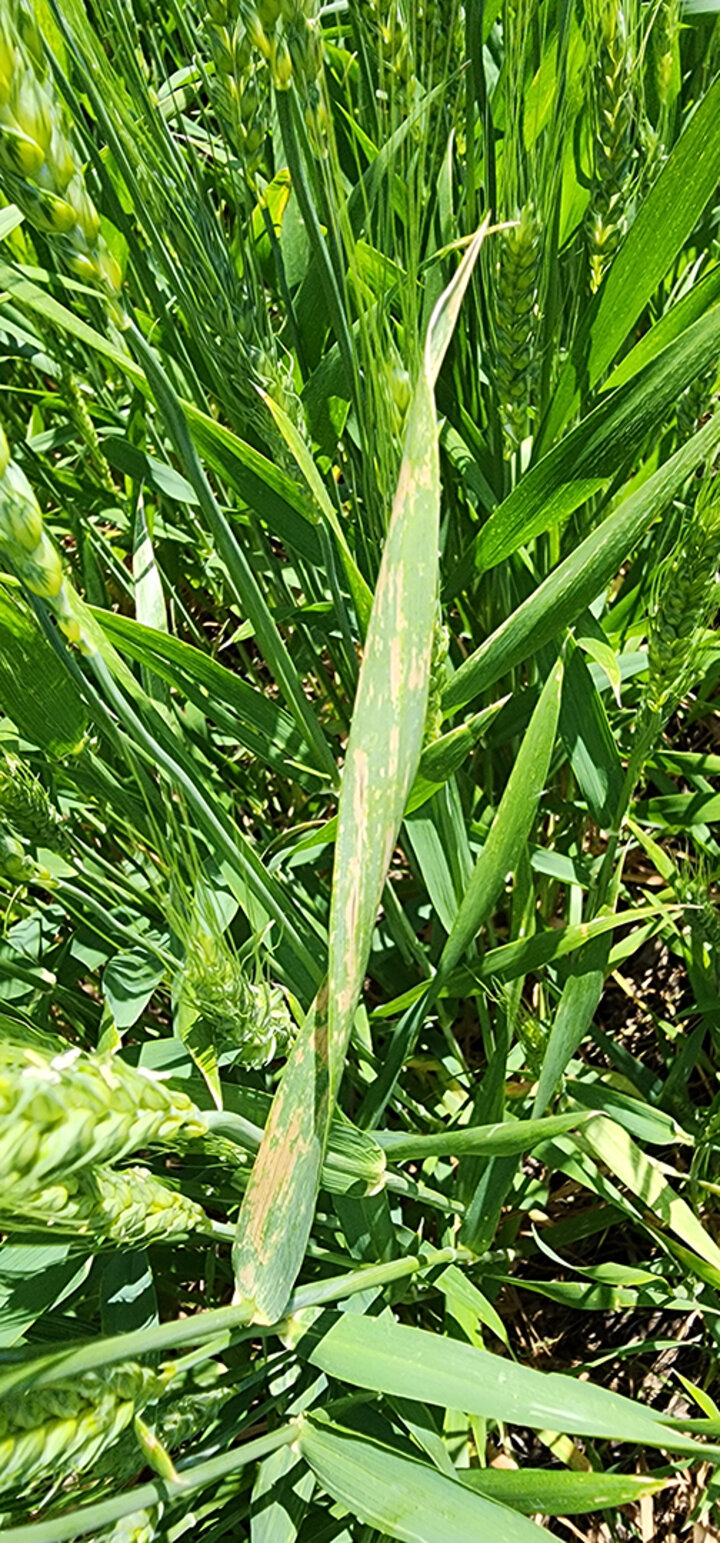
Volunteer wheat in summer crops such as sunflower and millet should also be controlled, as well as grassy weeds in wheat fields and summer crops. Volunteer and grassy weeds should be completely dead at least 14 days before planting winter wheat in the fall.
Additional management strategies for the WSMV disease complex include avoiding planting winter wheat too early, planting resistant or tolerant varieties, and avoiding planting winter wheat next to late maturing crops such as corn and millet that are hosts to the viruses or their wheat curl mite vector.
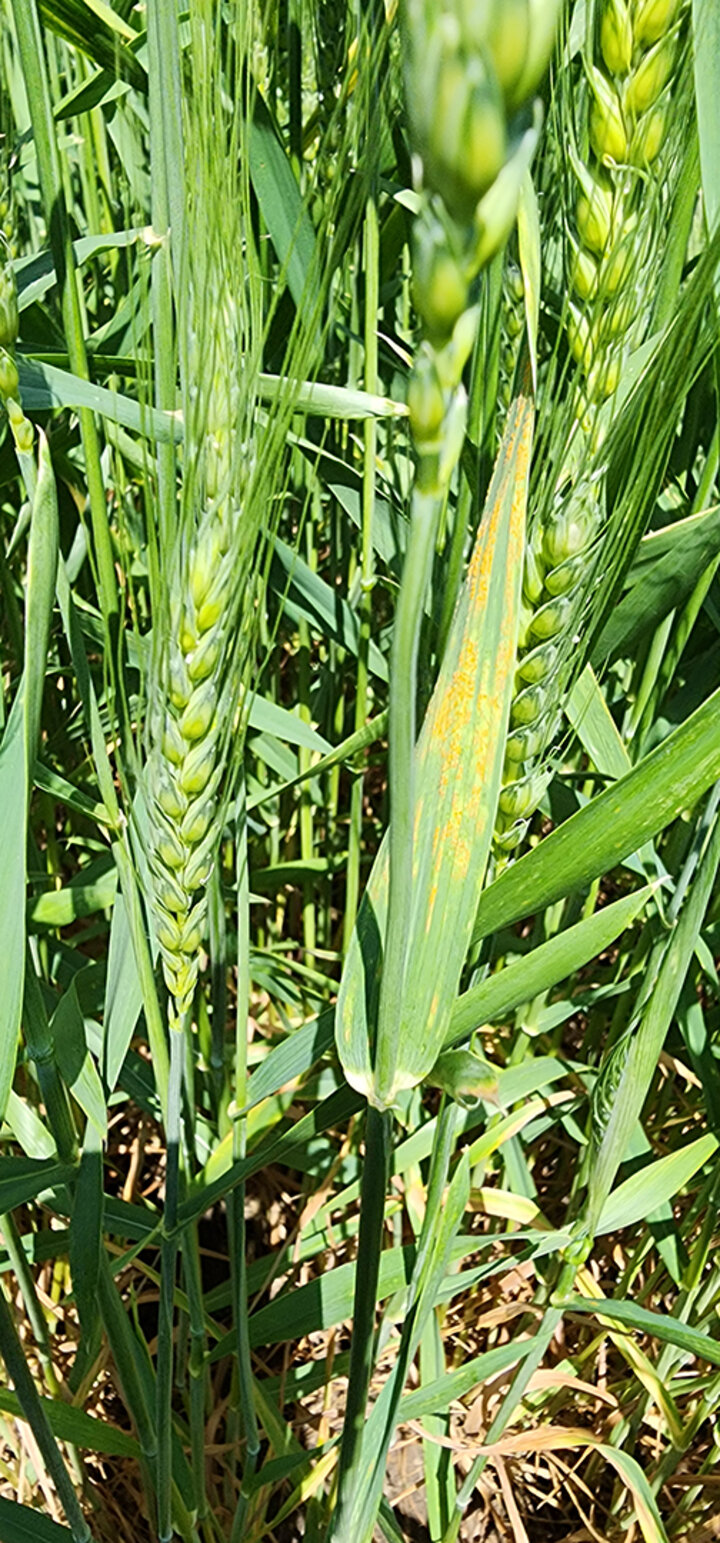
FHB is managed by applying an effective fungicide at early flowering and up to six days later. The Fusarium risk tool is currently showing a low risk for FHB in Nebraska. However, recent rainfall that coincided with flowering may raise the risk for FHB in localized wheat fields.
Septoria tritici blotch and stripe rust are managed by applying a fungicide to protect the flag leaf. Fungicides applied to control FHB at flowering will also effectively control Septoria tritici blotch and stripe rust. This year, the risk for damaging levels of stripe rust appears to be low.
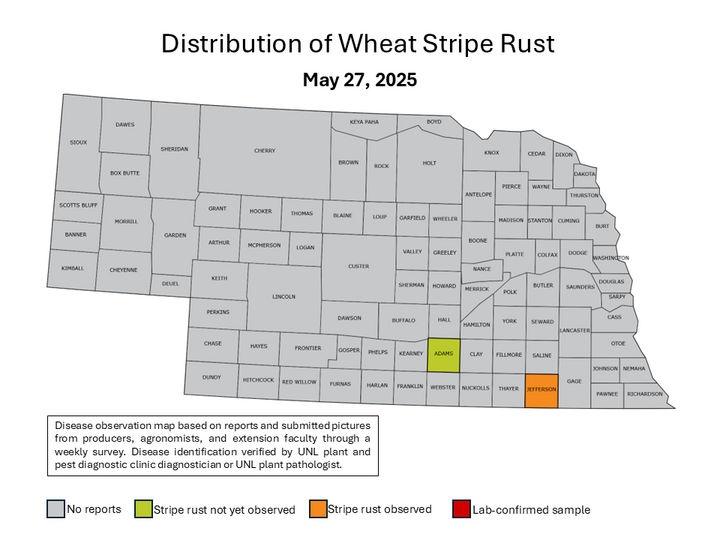
Wheat Disease Survey
As winter wheat continues to develop, Nebraska Extension is monitoring for rust diseases. Help track the spread of stripe and leaf rust across the state by contributing to the 2025 rust tracking map by taking a brief survey.
